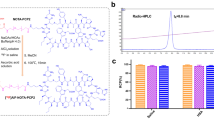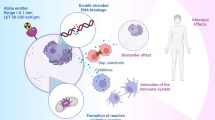Abstract
Objectives of the present investigation were: (1) to compare three literature reported tumor growth inhibition (TGI) pharmacodynamic (PD) models and propose an optimal new model that best describes the xenograft TGI data for antibody drug conjugates (ADC), (2) to translate efficacy of the ADC Trastuzumab-emtansine (T-DM1) from mice to patients using the optimized PD model, and (3) to apply the translational strategy to predict clinically efficacious concentrations of a novel in-house anti-5T4 ADC, A1mcMMAF. First, the performance of all four of the PD models (i.e. 3 literature reported + 1 proposed) was evaluated using TGI data of T-DM1 obtained from four different xenografts. Based on the estimates of the pharmacodynamic/pharmacokinetic (PK/PD) modeling, a secondary parameter representing the efficacy index of the drug was calculated, which is termed as the tumor static concentration (TSC). TSC values derived from all four of the models were compared with each other, and with literature reported values, to assess the performance of these models. Subsequently, using the optimized PK/PD model, PD parameters obtained from different cell lines, human PK, and the proposed translational strategy, clinically efficacious doses of T-DM1 were projected. The accuracy of projected efficacious dose range for T-DM1 was verified by comparison with the clinical doses. Aforementioned strategy was then applied to A1mcMMAF for projecting its efficacious concentrations in clinic. TSC values for A1mcMMAF, obtained by fitting TGI data from 4 different xenografts with the proposed PK/PD model, were estimated to range from 0.6 to 11.5 μg mL−1. Accordingly, the clinically efficacious doses for A1mcMMAF were projected retrospectively. All in all, the improved PD model and proposed translational strategy presented here suggest that appropriate correction for the clinical exposure and employing the TSC criterion can help translate mouse TGI data to predict first in human doses of ADCs.






Similar content being viewed by others
References
Ducry L, Stump B (2010) Antibody-drug conjugates: linking cytotoxic payloads to monoclonal antibodies. Bioconjug Chem 21(1):5–13
Deng C, Pan B, O’Connor OA (2013) Brentuximab vedotin. Clin Cancer Res 19(1):22–27. doi:10.1158/1078-0432.ccr-12-0290
Burris HA, Rugo HS, Vukelja SJ, Vogel CL, Borson RA, Limentani S, Tan-Chiu E, Krop IE, Michaelson RA, Girish S, Amler L, Zheng M, Chu Y-W, Klencke B, O’Shaughnessy JA (2011) Phase II study of the antibody drug conjugate trastuzumab-DM1 for the treatment of human epidermal growth factor receptor 2 (HER2) positive breast cancer after prior HER2-directed therapy. J Clin Oncol 29(4):398–405. doi:10.1200/jco.2010.29.5865
Fayad L, Patel H, Verhoef G, Smith M, Johnson P, Czuczman M, Coiffier B, Hess G, Gine E, Advani A et al (2008) Safety and clinical activity of the anti-CD22 immunoconjugate inotuzumabozogamicin (CMC-544) in combination with rituximab in follicular lymphoma or diffuse large B-cell lymphoma: preliminary report of a phase 1/2 study. In: Paper presented at the blood: ASH annual meeting abstracts
Kantarjian H, Thomas D, Jorgensen J, Jabbour E, Kebriaei P, Rytting M, York S, Ravandi F, Kwari M, Faderl S, Rios MB, Cortes J, Fayad L, Tarnai R, Wang SA, Champlin R, Advani A, O’Brien S (2012) Inotuzumab ozogamicin, an anti-CD22-calecheamicin conjugate, for refractory and relapsed acute lymphocytic leukaemia: a phase 2 study. Lancet Oncol 13(4):403–411
Sapra P, Hooper AT, O’Donnell CJ, Gerber H-P (2011) Investigational antibody drug conjugates for solid tumors. Expert Opin Investig Drugs 20(8):1131–1149. doi:10.1517/13543784.2011.582866
Johnson JI, Decker S, Zaharevitz D, Rubinstein LV, Venditti JM, Schepartz S, Kalyandrug S, Christian M, Arbuck S, Hollingshead M, Sausville EA (2001) Relationships between drug activity in NCI preclinical in vitro and in vivo models and early clinical trials. Br J Cancer 84(10):1424–1431
Kelland LR (2004) Of mice and men: values and liabilities of the athymic nude mouse model in anticancer drug development. Eur J Cancer 40(6):827–836
Kerbel RS (2003) Human tumor xenografts as predictive preclinical models for anticancer drug activity in humans: better than commonly perceived—but they can be improved. Cancer Biol Ther 2:0–5
Peterson JK, Houghton PJ (2004) Integrating pharmacology and in vivo cancer models in preclinical and clinical drug development. Eur J Cancer 40(6):837–844. doi:10.1016/j.ejca.2004.01.003
Troiani T, Schettino C, Martinelli E, Morgillo F, Tortora G, Ciardiello F (2008) The use of xenograft models for the selection of cancer treatments with the EGFR as an example. Crit Rev Oncol/Hematol 65(3):200–211. doi:10.1016/j.critrevonc.2007.10.003
Voskoglou-Nomikos T, Pater JL, Seymour L (2003) Clinical predictive value of the in vitro cell Line, human xenograft, and mouse allograft preclinical cancer models. Clin Cancer Res 9(11):4227–4239
Jumbe N, Xin Y, Leipold D, Crocker L, Dugger D, Mai E, Sliwkowski M, Fielder P, Tibbitts J (2010) Modeling the efficacy of trastuzumab-DM1, an antibody drug conjugate, in mice. J Pharmacokinet Pharmacodyn 37(3):221–242
Mordenti J, Thomsen K, Licko V, Chen H, Gloria Meng Y, Ferrara N (1999) Efficacy and concentration-response of murine anti-VEGF monoclonal antibody in tumor-bearing mice and extrapolation to humans. Toxicol Pathol 27(1):14–21. doi:10.1177/019262339902700104
Rocchetti M, Simeoni M, Pesenti E, De Nicolao G, Poggesi I (2007) Predicting the active doses in humans from animal studies: a novel approach in oncology. Eur J Cancer 43(12):1862–1868
Wong H, Choo EF, Alicke B, Ding X, La H, McNamara E, Theil F-P, Tibbitts J, Friedman LS, Hop CECA, Gould SE (2012) Antitumor activity of targeted and cytotoxic agents in murine subcutaneous tumor models correlates with clinical response. Clin Cancer Res 18(14):3846–3855. doi:10.1158/1078-0432.ccr-12-0738
Agoram BM, Martin SW, van der Graaf PH (2007) The role of mechanism-based pharmacokinetic-pharmacodynamic (PK-PD) modelling in translational research of biologics. Drug Discov Today 12(23–24):1018–1024
Simeoni M, Magni P, Cammia C, De Nicolao G, Croci V, Pesenti E, Germani M, Poggesi I, Rocchetti M (2004) Predictive pharmacokinetic-pharmacodynamic modeling of tumor growth kinetics in xenograft models after administration of anticancer agents. Cancer Res 64(3):1094–1101. doi:10.1158/0008-5472.can-03-2524
Lobo ED, Balthasar JP (2002) Pharmacodynamic modeling of chemotherapeutic effects: application of a transit compartment model to characterize methotrexate effects in vitro. AAPS Pharmsci 4(4):1–11
Sapra P, DiJoseph J, Damelin M, Dougher M, Narayanan B, Khandke K, Lucas J, Golas J, Tchistiakova L, Leal M, Hu G, Maderna A, Marquette K, Loganzo F, Dushin R, O’Donnell CJ, Abraham R, Gerber H-P (2012) Long-term tumor regression induced by a novel antibody drug conjugate that targets 5T4, an oncofetal antigen expressed on tumor-initiating cells. In: Proceedings of the 103rd annual meeting of the American Association for Cancer Research, Philadelphia, PA. AACR, Chicago, IL, Mar 31–Apr 4, 2012. Cancer Res. p Abstract nr 2530
Doronina SO, Mendelsohn BA, Bovee TD, Cerveny CG, Alley SC, Meyer DL, Oflazoglu E, Toki BE, Sanderson RJ, Zabinski RF, Wahl AF, Senter PD (2006) Enhanced activity of monomethylauristatin F through monoclonal antibody delivery: effects of linker technology on efficacy and toxicity. Bioconjug Chem 17(1):114–124
Krop IE, Beeram M, Modi S, Jones SF, Holden SN, Yu W, Girish S, Tibbitts J, Yi J-H, Sliwkowski MX, Jacobson F, Lutzker SG, Burris HA (2010) Phase I study of trastuzumab-DM1, an HER2 antibody-drug conjugate, given every 3 weeks to patients with HER2-positive metastatic breast cancer. J Clin Oncol 28(16):2698–2704. doi:10.1200/jco.2009.26.2071
Ling J, Zhou H, Jiao Q, Davis HM (2009) Interspecies scaling of therapeutic monoclonal antibodies: initial look. J Clin Pharmacol 49(12):1382–1402. doi:10.1177/0091270009337134
Deng R, Iyer S, Theil F-P, Mortensen DL, Fielder PJ, Prabhu S (2011) Projecting human pharmacokinetics of therapeutic antibodies from nonclinical data: what have we learned? mAbs 3(1):61–66
Yang J, Mager D, Straubinger R (2009) Comparison of two pharmacodynamic transduction models for the analysis of tumor therapeutic responses in model systems. AAPS J 12(1):1–10
Jacqmin P, McFadyen L, Wade J (2010) Basic PK/PD principles of drug effects in circular/proliferative systems for disease modelling. J Pharmacokinet Pharmacodyn 37(2):157–177
Muller PY, Milton M, Lloyd P, Sims J, Brennan FR (2009) The minimum anticipated biological effect level (MABEL) for selection of first human dose in clinical trials with monoclonal antibodies. Curr Opin Biotechnol 20(6):722–729
Gibbs J (2010) Prediction of exposure–response relationships to support first-in-human study design. AAPS J 12(4):750–758
FDA (2005) Estimating the maximum safe starting dose in initial clinical trials for theurapeutics in adult healthy volunteers. Guidance for Industry, Washington, DC
McAneney H, O’Rourke SFC (2007) Investigation of various growth mechanisms of solid tumour growth within the linear-quadratic model for radiotherapy. Phys Med Biol 52(4):1039–1054
Norton L (2005) Conceptual and practical implications of breast tissue geometry: toward a more effective, less toxic therapy. Oncologist 10(6):370–381. doi:10.1634/theoncologist.10-6-370
Campbell A, Sivakumaran T, Davidson M, Lock M, Wong E (2008) Mathematical modeling of liver metastases tumour growth and control with radiotherapy. Phys Med Biol 53(24):7225–7239
NIH (2002) Institutional animal care and use committee guidebook. National Institutes of Health, Office of Laboratory Animal Welfare
Haddish Berhane N, Lin J, Betts A, Kuhn M, King B, Roberts E, Irvine B, Hanna D (2010) Use of preclinical pharmacokinetic/pharmacodynamic (PK/PD) modeling early on in antibacterial drug discovery using in vitro data development In: ICAAC 2010, Boston, MA
Leal M (2012) Pre-clinical PK and disposition of calicheamicin and auristatin-based antibody-drug conjugates. In: National biotechnology conference, San Diego, CA, May 21–23, 2012
Shah DK, Haddish-Berhane N, Betts A (2012) Bench to bedside translation of antibody drug conjugates using a mechanistic PK/PD model: a case study with SGN-35. J Pharmacokinet Pharmacodyn 39(6):643–659
Acknowledgments
The authors are grateful to Frank Loganzo, William Hu, Manoj Charati, Ellie Muszynska, and Nadira Prasad for bioconjugation; members of the Oncology In Vivo Group and vivarium staff in Pearl River for animal studies; Joan Wentland, Michael Giovanelli for PK and TK and Chandra Vage for discussions on ceff plots, Andreas Maderna, Hud Risley, Alexander Porte, Mathew Doroski, Zecheng Chen, Gary Filzen, Dahui Zhuo, Philip Hamann and Jeremy Levin for the preparation of mcMMAF; The authors acknowledge Seattle Genetics Inc., and Oxford BioMedica for access to technology.
Author information
Authors and Affiliations
Corresponding author
Electronic supplementary material
Below is the link to the electronic supplementary material.
Rights and permissions
About this article
Cite this article
Haddish-Berhane, N., Shah, D.K., Ma, D. et al. On translation of antibody drug conjugates efficacy from mouse experimental tumors to the clinic: a PK/PD approach. J Pharmacokinet Pharmacodyn 40, 557–571 (2013). https://doi.org/10.1007/s10928-013-9329-x
Received:
Accepted:
Published:
Issue Date:
DOI: https://doi.org/10.1007/s10928-013-9329-x




